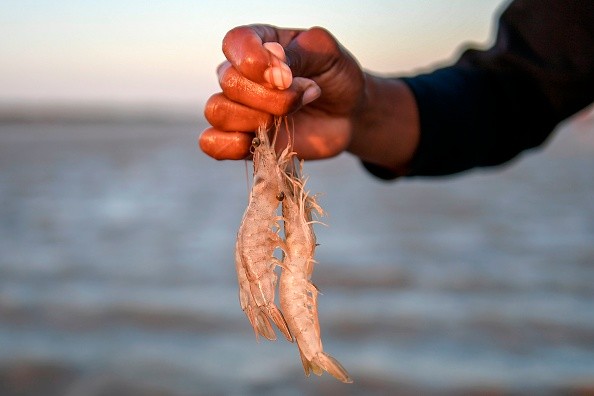Burrowing animals were first to recover just after the end-Permian mass extinction, according to studies examining ancient sea bed trails and burrows.
Researchers from China, the United States, and the United Kingdom describe how life in the sea managed to recover from the event, which killed more than 90% of the species on Earth, in a new study that was just published in the journal Science Advances.
Permian mass extinction
 (Photo : LUIS ACOSTA/AFP via Getty Images)
(Photo : LUIS ACOSTA/AFP via Getty Images)

The end-Permian extinction (EPE), which also wiped out more than 90% of marine species and more than 70% of land species, was the worst biotic dilemma in the History of the earth, as per Phys.org.
Studying the S-isotopic composition of the EPE in the Sydney Basin, researchers headed by Dr. Li Menghan from the University of Science and Technology of China (USTC) of the Chinese Academy of Sciences discovered that a sharp S-isotopic reduction happened to coincide with the terrestrial extinction.
They found that sulfate aerosols cause both long-term global warming and short-term cooling in the climate. The extinction of marine species and the mechanisms underlying it have received a lot of attention in the research of the environment and the EPE, whereas research findings on the extinction of terrestrial life seem to be uncommon.
The information showed that the Sydney Basin terrestrial organism extinction occurred between 200,000 and 600,000 years before the global marine extinction.
Based on this, the team hypothesized that related sulfur cycling processes in sulfate-deficient lake systems may have produced the high pre-extinction S-isotopic combinations of pyrite from the Sydney Basin.
The data showed that the extinction of terrestrial species in the Sydney Basin predated the global marine extinction by roughly 200,000 to 600,000 years.
A sharp S-isotopic reduction happened to coincide with the terrestrial extinction, which has been exhibited in three stages.
Read More: Toxic Soup: World's Worst Mass Extinction Killed Thousands of Animals 252 Million Years Ago
Animal recovers in mass extinction
It took millions of years for biodiversity to gain back to pre-extinction levels after the end-Permian mass extinction 252 million years ago, as per ScienceDaily.
The international team, however, was able to reconstruct together the resurgence of sea life by determining what animal activity was taking place when by investigating trails as well as burrows on the South China sea bed.
The end-Permian mass extinction and the return of life in the Early Triassic are well recorded in South China, according to Professor Michael Benton of the University of Bristol's School of Earth Sciences, a co-author of the new paper.
The study was directed by Dr. Xueqian Feng from the China University of Geosciences in Wuhan, and he focused on historic trails and burrows.
He explained that trace fossils like trails and burrows mainly represent soft-bodied marine animals. The majority of these soft-bodied creatures lacked or had weak skeletons.
Massive numbers of immaculately preserved trace fossils can be found in South China in some amazing localities, and the details can reveal infaunal ecosystem engineering behaviors and also their positive feedback on biodiversity of skeletonized animal species.
The study's director, Professor Zhong-Qiang Chen, stated: The trace fossils reveal when and places where soft-bodied, burrowing animals thrived in this Early Triassic greenhouse environment.
One of the most notable characteristics of the South China data is the range of ancient surroundings we could collect data, said Professor David Bottjer, a study collaborator from the University of Southern California.
Another team member, Dr. Chunmei Su, stated: The mass extinction killed more than 90% of the species on This planet, and we see the disastrous reduction in ecosystem functioning of the remaining marine animals.
The University of Southern California's Alison Cribb, a study collaborator, added the recovery of suspension feeders, such as brachiopods, bryozoans, and many bivalves, took much longer. The first creatures to recover were deposit feeders, like worms and shrimp.
Related Article: One of the World Largest Mass Extinctions May Have Been Triggered by Volcanic Winter
© 2024 NatureWorldNews.com All rights reserved. Do not reproduce without permission.

![Climate Change is Reducing Dust Levels Worldwide as Arctic Temperature Warms [Study]](https://1471793142.rsc.cdn77.org/data/thumbs/full/70320/280/157/50/40/climate-change-is-reducing-dust-levels-worldwide-as-arctic-temperature-warms-study.jpg)

![Tsunami Hazard Zones: New US Map Shows Places at Risk of Flooding and Tsunamis Amid Rising Sea Levels [NOAA]](https://1471793142.rsc.cdn77.org/data/thumbs/full/70325/280/157/50/40/tsunami-hazard-zones-new-us-map-shows-places-at-risk-of-flooding-and-tsunamis-amid-rising-sea-levels-noaa.jpg)

